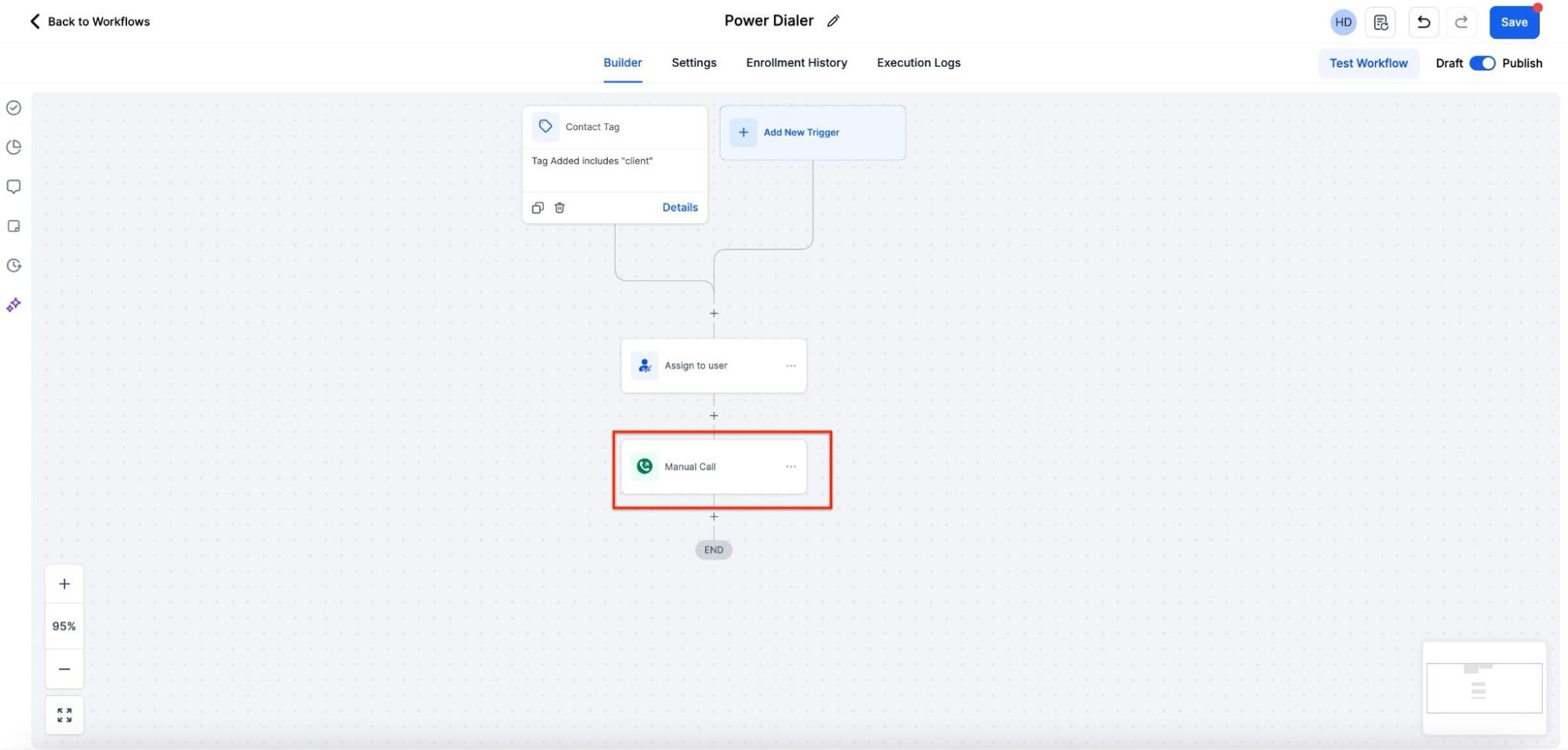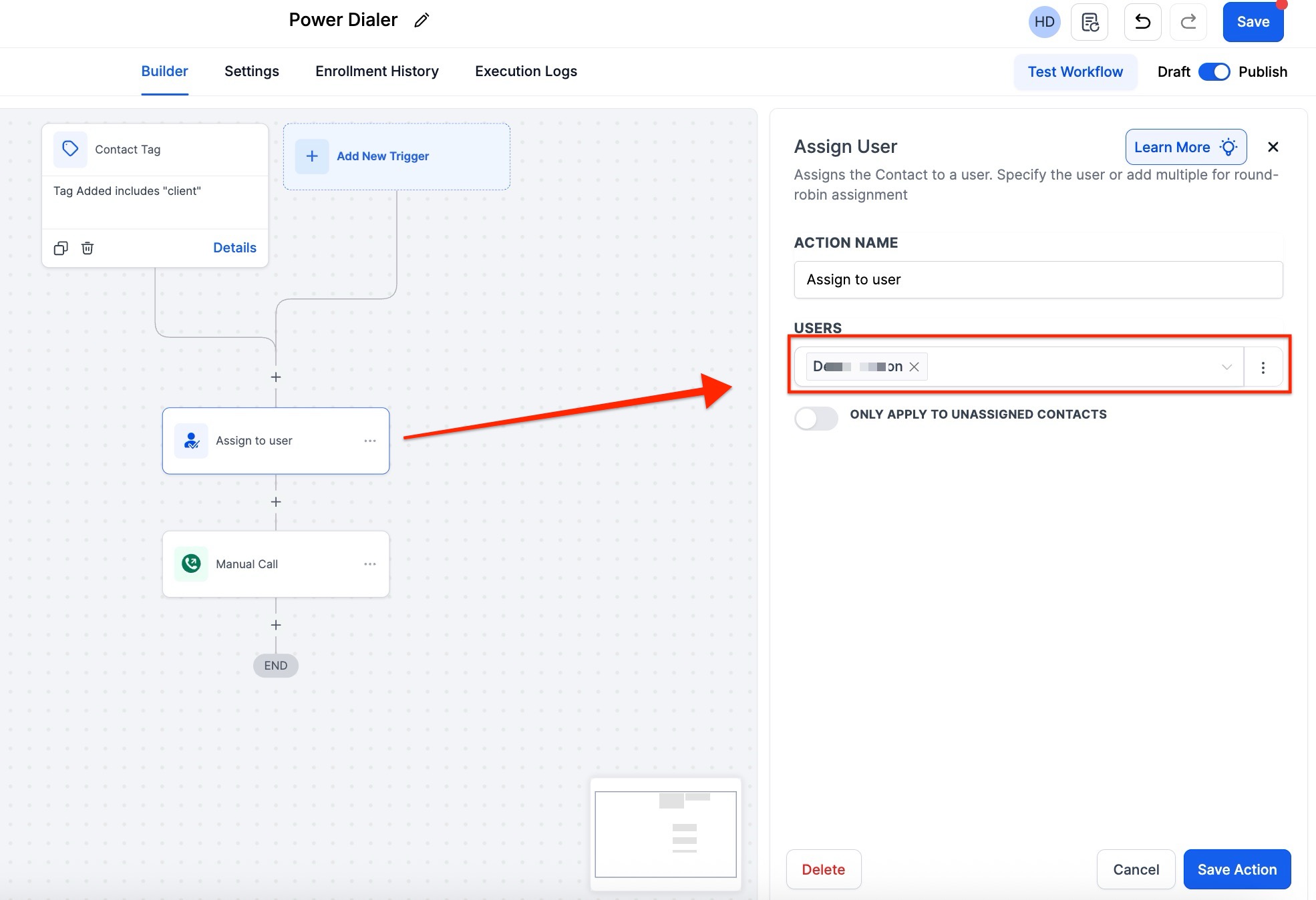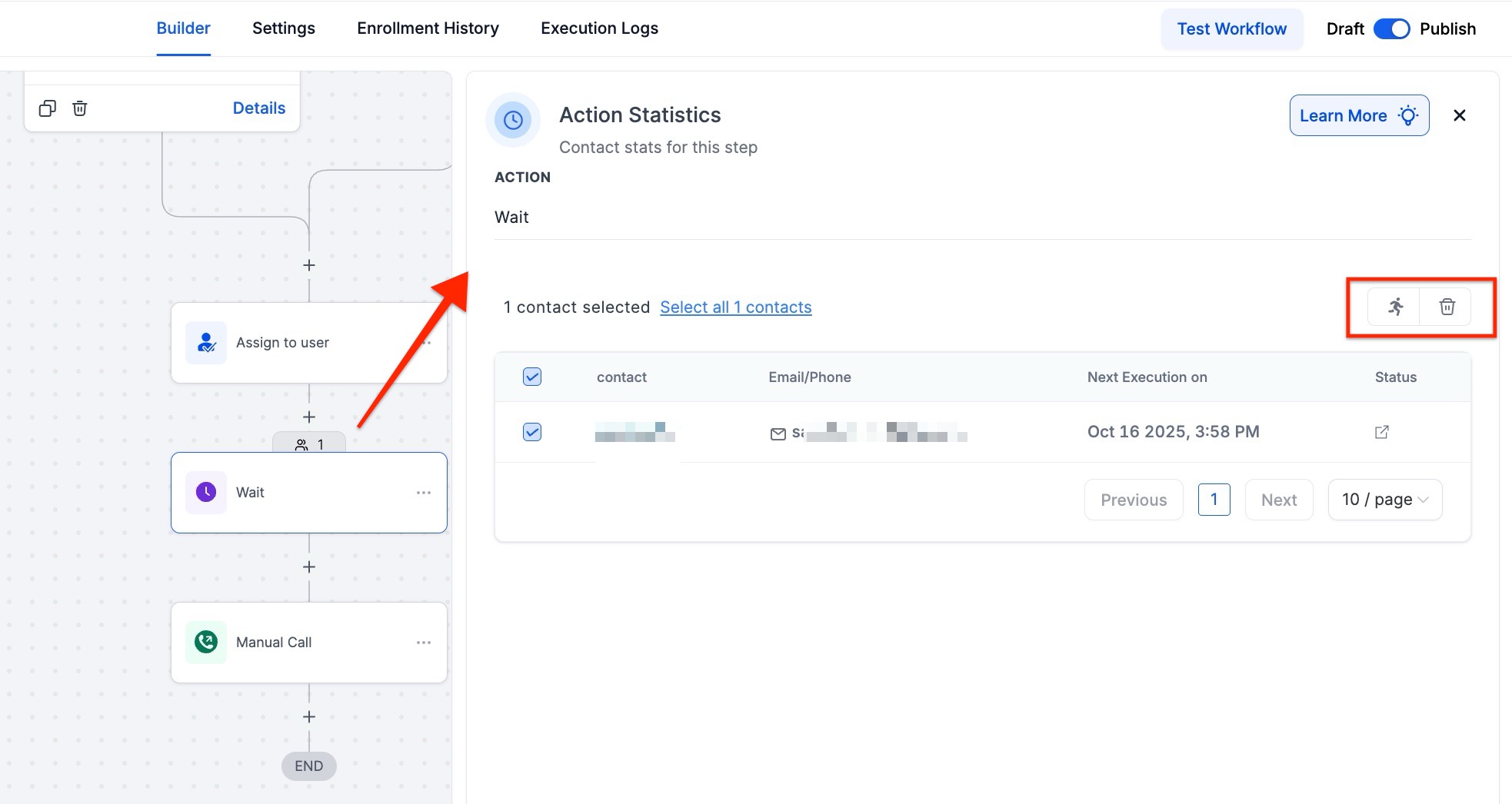Workflow Action: Manual Call Event
The Manual Call Event creates a queue so someone logs into Mastermind, they can view a call list and utilize the call function to call through that list. Whether you're making cold calls, following up with leads, or managing a team of callers, this tool can help optimize your workflow and improve productivity.
Key Features and Benefits
Centralized Communication Hub
The Power Dialer system allows businesses to place calls, track engagement, and manage leads all from within a single desktop platform. This eliminates the need for switching between multiple systems, saving time and reducing the chances of errors.
Manual Call Actions Integration
One of the standout features of the Power Dialer is its integration with manual call actions. You can easily create and manage manual call actions, making it simple to stay organized and follow up with leads promptly. This can be done through workflows that automatically trigger calls based on a variety of conditions.
Efficient Lead Tracking
The system lets you track the status of each call, whether it was answered, went to voicemail, or resulted in no answer. This helps you stay on top of follow-up tasks and ensures you don’t miss any crucial opportunities.
Workflow Automation
Through the use of workflows, you can automate the process of creating manual call actions. You can customize workflows to trigger based on contact tags, pipeline changes, or even manually adding contacts. This flexibility allows you to adapt the system to your unique business needs.
Multi-User Support
If you have a team managing calls, the Power Dialer system can be used to assign tasks to specific users, making it easier to delegate and track performance across multiple team members.
Step 1: Create a Manual Call Workflow
- You can create a new Workflow or modify an existing one. Click "Add Action" and choose "Manual Call."
- You can set this up to trigger based on specific actions like adding a tag or importing contacts.


- Assigning Calls to Users: For businesses with multiple callers, you can assign manual call actions to specific users within the workflow. This ensures that the right person is handling the calls.

- Save and Publish the Workflow.

Step 2: Managing Calls and Leads
- Once the calls are triggered, navigate back to the manual actions page. From here, you can start the Power Dialer by clicking “Start.” The system will automatically dial the contact's number, allowing you to engage with leads directly.

- Since the call will be coming from a browser, you may need to click “allow microphone” to activate the permissions on your computer.
- Tracking Call Progress: After completing a call, you can categorize the result as "No Answer," "Busy," "Voicemail," or "Completed." This information is saved automatically, and you can move on to the next lead. You can also add notes and track the progress with the visual progress bar.
Note: If you have a large list and want to pause, you can click on the “Let’s Start” button and it will pause the sequence (there’s a 5 second rundown before the next call comes in).
- If you go back to the Workflow, you will be able to see the workflow action's stats.
- You can choose to:
- Move all contacts currently in this step to the next step by clicking on the running man icon.
- Remove all contacts in this step from this workflow by clicking on the trash icon.

Pro Tips
- Batch Calling: For businesses with a large list of leads, consider using batch workflows to assign multiple contacts to a single dial session. This can greatly increase efficiency when reaching out to a large volume of leads.
- Customize Your Tags: Tags are a powerful tool to trigger specific workflows. Take the time to create a well-organized tag system that aligns with your business processes to streamline workflow automation.
- Utilize Call Notes: Always take advantage of the note-taking feature after each call. This ensures that you have important details at hand for follow-up calls or meetings with the lead.
Use Cases
- Lead Follow-Up: Use the Manual Call Workflow to follow up with leads after an initial contact or meeting. This helps in maintaining engagement and moving leads through the sales funnel.
- Customer Feedback: Implement the workflow to gather feedback from customers on their experiences or recent purchases. This can provide valuable insights for improving services.
- Event Reminders: Automate calls to remind contacts about upcoming events, appointments, or deadlines. This ensures your contacts are well-informed and reduces no-show rates.
- Surveys and Polls: Utilize the workflow for conducting surveys or polls over the phone. This method can be more effective for gathering detailed responses compared to online surveys.
FAQ
What types of triggers can be used to initiate the Power Dialer?
You can set up triggers based on contact tags, pipeline changes, imported contacts, or manually adding contacts to a workflow. The flexibility ensures that the system fits various business needs.
Can I assign calls to specific team members?
Yes, by adding an “Assign to User” action in your workflow, you can designate calls to specific team members to ensure that the right person handles each lead.
What happens if I miss a call?
If you miss a call or if the lead doesn’t answer, you can categorize it as “No Answer” and move on to the next lead in the list. The system will automatically track these calls for future follow-ups.
Is there a limit to the number of leads I can manage?
There is no specific limit on the number of leads you can manage, but the efficiency of the system may vary based on the number of users and the resources available in Mastermind.
Can I pause a call session?
Yes, click the “Let’s Start” button to pause the session. There’s a 5-second rundown before the next call resumes.
